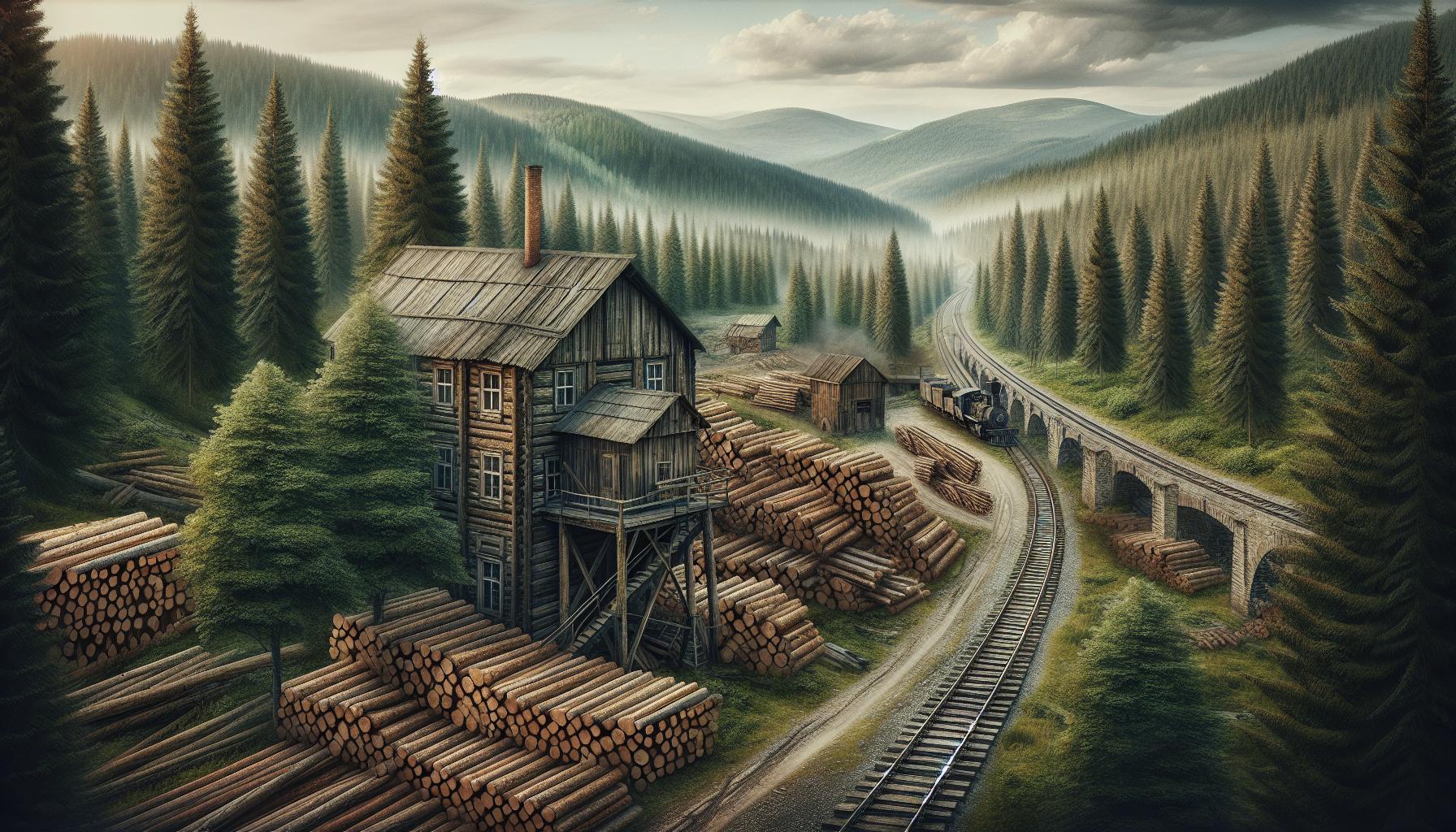When you think of Redmond, Washington, you probably picture tech giants and bustling innovation. But there’s so much more to this city than just its modern-day fame. Redmond’s history is rich with stories of pioneers, growth, and transformation that have shaped it into the vibrant community it is today.
I find it fascinating how Redmond evolved from a small logging town into a global tech hub. From its early days of sawmills and farms to becoming the headquarters of household names like Microsoft, Redmond’s journey is a testament to resilience and vision. Join me as we explore the roots of this remarkable city and uncover the layers of history that have contributed to its unique character.
Overview Of Redmond’s Roots: A History Of The City
Redmond, Washington, began as a modest logging town in the late 19th century. The first settlers arrived around the 1870s, drawn by the lush forests and the abundant resources of the Sammamish River. The town’s early economy relied heavily on logging and agriculture.
The arrival of the railroad in 1888 marked a significant milestone. It connected Redmond to neighboring regions, boosting the local economy and facilitating the transport of timber and agricultural goods. I’ve read that by the early 1900s, Redmond had its first school, general store, and post office, indicating the establishment of a growing community.
Incorporated in 1912, Redmond gradually diversified beyond logging. Farming, particularly dairy farming, played a vital role in sustaining the local economy. I find it fascinating that community events like the annual Derby Days, which began in 1939, fostered local pride and camaraderie, laying a foundation for future growth.
The mid-20th century saw a shift towards a more suburban lifestyle. The construction of the Evergreen Point Floating Bridge in 1963 made commuting to Seattle easier, spurring residential development. Redmond’s population doubled between 1950 and 1970, reflecting this suburban boom.
Techonology started reshaping Redmond’s identity in the late 20th century. Microsoft moved its headquarters to Redmond in 1986, dramatically impacting the local economy and culture. The influx of tech companies transformed Redmond into a bustling tech hub, attracting skilled professionals from around the globe.
The city also prioritized maintaining green spaces amid rapid urbanization. Parks like Marymoor Park, with its biking trails and concert venues, became community landmarks. Redmond’s commitment to sustainability is evident in initiatives promoting green building and renewable energy sources.
Today, Redmond balances its rich history with a forward-thinking vision. The city embraces innovation while preserving its historical roots. With diverse cultural offerings, a robust tech industry, and a strong sense of community, Redmond represents a unique blend of past and future.
The Early Settlers And Their Impact
Redmond’s transformation began with its earliest inhabitants and evolved significantly with the arrival of European settlers.
Indigenous Communities
Indigenous communities, primarily the Duwamish and Sammamish tribes, were the first to reside in the Redmond area. These tribes lived in harmony with the land, relying on fishing, hunting, and gathering for sustenance. They built longhouses near the Sammamish River and Lake Sammamish, utilizing the waterways for transportation and trade.
The indigenous people had a deep connection to the region’s natural resources. They celebrated the seasonal returns of salmon and held spiritual ceremonies tied to the land’s cycles. Their intricate knowledge of the local flora and fauna contributed to a sustainable lifestyle that thrived for thousands of years.
Unlike the later settlers, the indigenous communities maintained the area’s ecological balance. They set an example for future generations, showcasing respect for the environment and sustainable living practices. Their presence and traditions shaped the foundational identity of the Redmond region.
Arrival Of European Settlers
European settlers began arriving in the Redmond area in the late 19th century. They were attracted by the promise of fertile land and abundant timber. These settlers, primarily of European descent, cleared vast tracts of land for logging and agriculture, significantly altering the landscape.
One key figure was Luke McRedmond, after whom the city is named. He arrived in 1871 and became a prominent landowner and community leader. The settlers established essential services and businesses, laying the groundwork for the town’s development. They constructed roads, schools, and churches, fostering a sense of community.
While settlers brought technological advancements, they also displaced indigenous communities and disrupted natural ecosystems. Despite this, their efforts in establishing infrastructure contributed to Redmond’s growth. The influence of these early settlers is evident in the town’s layout and early buildings, which reflect European architectural styles.
By understanding the dual impact of settlers—both productive and disruptive—one can appreciate the complex history that shapes modern Redmond.
Economic Growth And Industrialization
Economic growth in Redmond accelerated alongside industrialization, shifting its foundational identity from agriculture and timber to high technology and diverse enterprises.
The Logging Industry
The logging industry was crucial to Redmond’s early economy. In the late 1800s, extensive forests surrounded the area, providing abundant timber. Local mills processed logs from the Sammamish River vicinity, creating a robust trade system. The arrival of the Seattle Lake Shore and Eastern Railway in 1888 further boosted logging activities. Trains transported lumber to Seattle, increasing commercial opportunities. Families like the Perrigos and McRedmonds contributed to this booming industry, establishing sawmills and other businesses. However, as forests were cleared, the community had to diversify its economy, leading to the rise of dairy farming and other agricultural activities in the early 20th century.
The Tech Boom
The tech boom radically transformed Redmond’s economy. Microsoft’s relocation to Redmond in 1986 marked a significant turning point. The company’s expansion attracted other tech businesses, creating a cluster of innovation. Redmond’s population and infrastructure grew rapidly to meet the demands of this burgeoning industry. Job opportunities increased, attracting a skilled workforce and fostering a vibrant community. Besides Microsoft, companies like Nintendo of America and Honeywell added to Redmond’s tech landscape. The shift to technology reshaped Redmond’s identity, making it a global tech hub while preserving its community-centered ethos with continued investment in public spaces and cultural events.
Cultural Development And Diversity
Redmond’s cultural diversity stems from a mix of historical influences and modern growth. The city’s rich heritage is reflected in its architecture and vibrant festivals.
Architectural Heritage
Redmond’s architectural landscape showcases a blend of old and new. Historic structures like the Justice White House, built in 1910, offer a glimpse into early 20th-century architecture. The Old Redmond Schoolhouse Community Center, once an educational hub, now serves as a venue for community events. Modern buildings, such as the Microsoft campus, illustrate contemporary design trends and technological advancements. The incorporation of public art in many structures highlights Redmond’s commitment to cultural expression, creating an appealing urban environment.
Cultural Festivals
Redmond hosts various cultural festivals celebrating its diverse community. Derby Days, one of the city’s oldest traditions, began in 1940 and features parades, music, and bike races, bringing residents together. The Redmond Lights festival, held in December, is a multicultural holiday celebration with light displays, music, and international food. So Bazaar, an evening art and food market, showcases local artists and chefs. Together, these festivals enrich community spirit and reflect Redmond’s vibrant cultural tapestry.
Challenges And Transformations
Redmond has faced various challenges throughout its history, leading to significant transformations in its economic and environmental landscape.
Economic Shifts
Redmond’s economy has undergone several major shifts. The early reliance on logging and agriculture laid the groundwork for its initial growth. However, as logging waned in the early 20th century, the city turned to dairy farming and other agricultural activities. By the mid-20th century, suburban development altered the city’s economic focus again, driven by the construction of the Evergreen Point Floating Bridge in 1963, which streamlined commuting to Seattle.
The most transformative economic shift came in 1986 when Microsoft moved its headquarters to Redmond. This attracted other tech companies, such as Nintendo of America and Honeywell, creating a tech hub. The influx of these companies led to rapid population growth and infrastructure expansion, significantly altering the local economy from its agricultural roots to a tech-driven landscape.
Environmental Concerns
Despite rapid urbanization, Redmond has faced ecological challenges. Initially, logging and land clearing disrupted local ecosystems, affecting indigenous communities and the area’s natural balance. The city has since prioritized green space conservation, converting areas like Marymoor Park into community landmarks.
Urbanization and industrial growth have also posed environmental concerns. Increased construction and population density put pressure on natural resources and local wildlife habitats. Through various initiatives, such as sustainable development planning, Redmond has worked to mitigate these impacts. Projects focusing on green building, preserving wetlands, and promoting public transportation help balance development with environmental stewardship.
Key Figures And Their Contributions
Redmond’s journey from a logging town to a tech hub highlights the critical roles played by various individuals and businesses.
Community Leaders
Key community leaders shaped Redmond’s early infrastructure and civic culture. Luke McRedmond, one of Redmond’s founders, dominated early development with his sawmill business, which bolstered the local economy. After serving as the postmaster, he used his local influence to foster growth.
Laura Boyd succeeded in establishing the first school, transforming educational standards. Her contributions in promoting education laid the groundwork for Redmond’s future.
Bob Electric, the first mayor, fostered community services and created a framework for local governance. His efforts ensured that Redmond evolved with a strong civic infrastructure. Civic leaders like Boyd and Electric instilled pride in the growing community by organizing events, such as Derby Days, that continue to bind residents together.
Influential Businesses
Several businesses drastically influenced Redmond’s economic landscape. The McRedmond sawmill dominated the late 19th-century, facilitating economic growth through the logging industry. Families like the Perrigos expanded this influence by establishing additional mills.
The arrival of Microsoft in 1986 marked a turning point, transforming Redmond into a globally recognized tech hub. Microsoft’s presence attracted other tech firms, including Nintendo of America, which further diversified the local economy.
Honeywell’s engineering operations provided essential technological advancements, enhancing Redmond’s industrial portfolio. These businesses collectively created a dynamic economy, characterized by rapid innovation and job growth.
The Modern Cityscape
Redmond’s cityscape reflects seamless integration of urban planning and technological advancements. The balance of green spaces and innovative infrastructure exemplifies the city’s unique charm.
Urban Planning
Redmond’s urban planning emphasizes sustainability and community engagement. The city implements mixed-use developments that blend residential, commercial, and recreational areas. These zones include the Downtown neighborhood, which features pedestrian-friendly streets, shops, and eateries. Redmond Central Connector, a linear park and trail, offers accessible green space for residents and visitors.
Public transportation remains a priority, with the expansion of light rail and improved bus services aiming to reduce traffic congestion and carbon emissions. Redmond’s Comprehensive Plan guides development, ensuring growth aligns with environmental stewardship. Examples like the Redmond Central Connector illustrate the city’s commitment to preserving green spaces amid urban growth.
Community participation shapes planning processes. Open forums and town hall meetings invite residents to voice opinions on urban initiatives. This collaborative approach ensures that development projects meet the needs of Redmond’s diverse population. Partnerships with private sectors, such as tech companies, further drive innovative urban solutions.
Technological Integration
Technological integration underpins Redmond’s modern infrastructure. The city’s tech hub status, driven by companies like Microsoft and Nintendo of America, fosters a high-tech environment. Smart city projects utilize IoT devices to manage resources and optimize services.
Public Wi-Fi hotspots and advanced broadband networks enhance connectivity. Redmond’s adoption of smart traffic management systems, using sensors and data analytics, improves traffic flow and reduces incidents. Electric vehicle charging stations across the city promote sustainable transportation.
Community-centric tech initiatives include digital literacy programs to bridge the digital divide. Schools and libraries offer resources to equip residents with necessary tech skills. Redmond’s tech ecosystem encourages startups through incubators and co-working spaces, fostering innovation and entrepreneurship.
Conclusion
Redmond’s journey from a humble logging town to a bustling tech hub is nothing short of inspiring. The city’s ability to adapt and grow while honoring its past is a testament to the resilience and vision of its community. Exploring Redmond’s history offers a deeper appreciation for the vibrant, innovative place it is today.
From its early settlers and indigenous roots to the modern tech giants that call it home, Redmond is a city that beautifully blends the old with the new. It’s a place where community pride and technological advancement go hand in hand, creating a unique and dynamic environment for everyone.





0 Comments